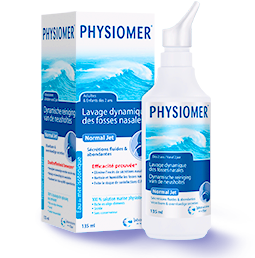Although they are not severe diseases and the symptoms are in most cases manageable, the common cold and flu are still debilitating. It makes sense to try and prevent your risk of infection where possible.
What causes colds and other everyday viral infections?
Hundreds of different viral infections can cause the common cold, but the most common culprits are rhinoviruses, which enter the body primarily via the nose or mouth. Once they take hold, these germs usually cause a multitude of irritating symptoms, but the troublesome trio of complaints tend to be blocked nose, sore throat and cough. It’s worth noting that small proportion of infected people are lucky enough not to experience any symptoms at all.
Flu, on the other hand, is caused by one of the three types of influenza virus. Although flu shares many of the same symptoms as the common cold, it also brings a slew of others in addition. Expect to experience feelings such as a high temperature, aches and pains, cold sweats and shivers. You might not feel all of those, but at least some can strike. In general, flu is worse than the common cold, and symptoms are more intense.
Most people recover from a bout of cold or flu quickly, but when you’re in the throes of an infection, you may find that the symptoms have a negative impact on your work, general productivity and social life.

Why do colds and flu strike in winter?
Colds and flu can strike at any time, but in most cases, these viral infections follow predictable seasonal patterns. The first signs of cold and flu activity usually start around October, peaking at the height of winter. They are the most common cause of missed work and school days.
Sometimes, particularly powerful pandemics can stick around and until the weather brightens up in May.
Locations across the globe with similar climates see comparable patterns, with low temperatures and low humidity cited as prime factors for the spreading of cold and flu.
6 tips for preventing colds and flu
A person with a cold or flu can start spreading it a few days before their symptoms actually begin to appear. They are infectious until all of their symptoms have ended. However, there are plenty of ways to avoid catching a cold or flu.
Follow these tips to minimise your chance of infection:
- During peak cold and flu season, a clinically proven way to prevent infections from taking hold is to try regular nasal irrigation. Use a safe and natural nasal spray like PHYSIOMER®, which is made from 100% seawater, and can cut the number of cold and flu infections over the winter period.
- If it’s possible, try to avoid getting in close proximity to someone who is sick.
- Wash your hands regularly with warm water and soap, or use hand sanitiser.
- Don’t share towels or household items like mugs or cutlery with someone who has a cold.
- If you think you’ve come into contact with a virus, try not to touch your face, eyes or nose.
- Stay fit and healthy so your body is well equipped to fight any instances of cold or flu.
View the full range of PHYSIOMER® products to find the best solution for you.



